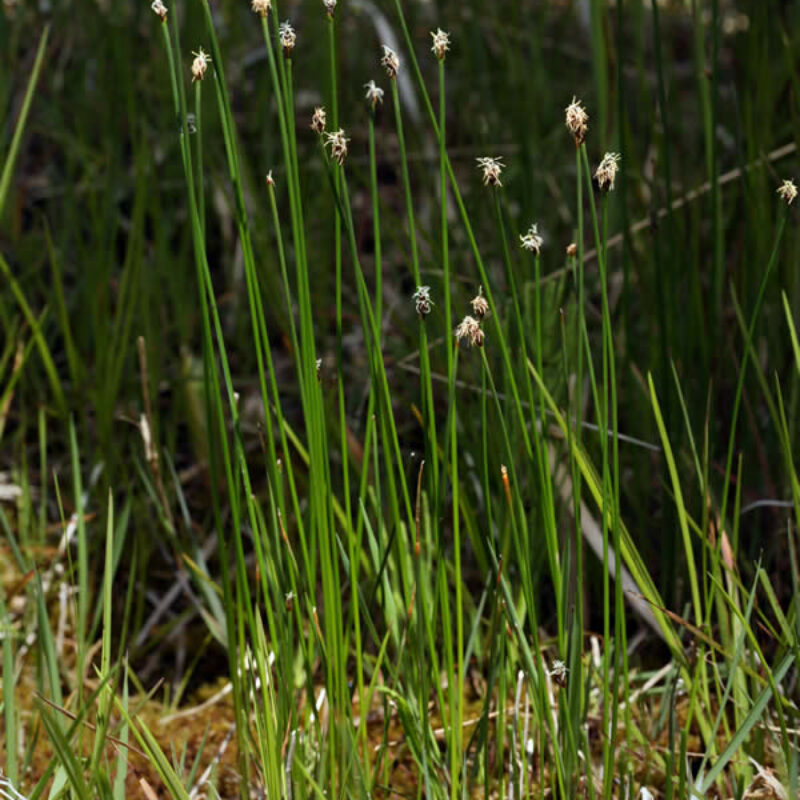Common SpikerushEleocharis palustris
Native, perennial herb growing in dense mats. Creeping spikerush is excellent for erosion control of ditches, lakes, and slow streams because of its dense growth in clumps along shorelines. Plants spread rapidly by rhizomes and will develop a thick root mass that is resistant to compaction and erosion.
USDA symbol: ELPA3
General Information
| Plant Type | Grass |
|---|---|
| Height | 1 to 3 feet |
| Light Exposure | Sun, Part Sun |
| Soil Moisture | Wet |
| Bloom Color | Brown |

Tolerances
| Flooding / Inundation Tolerance | Moderate |
|---|---|
| General Resilience | 6 |
| Salt Tolerance | Low |
| Stress Tolerance | Alkaline Conditions, Fire Tolerant, General Disturbance |
Pollinator Value: None Known
| Bloom Months | May to June |
|---|
Project Planning
| Project Type | Erosion Control, Restoration, Shoreline Buffer |
|---|---|
| Coefficient of Conservatism | 5 |
| Herbivore Sensitivity | High |
| Lifespan | Perennial |
| Rate of Spread | Slow |
| Soil Stabilization | Deep |
| Vegetative Reproduction | Clonal |
Range
| County | Aitkin, Anoka, Becker, Beltrami, Big Stone, Blue Earth, Brown, Carlton, Carver, Cass, Chippewa, Chisago, Clay, Clearwater, Cook, Cottonwood, Crow Wing, Dakota, Douglas, Freeborn, Goodhue, Grant, Hennepin, Hubbard, Isanti, Itasca, Jackson, Kandiyohi, Kittson, Koochiching, Lac qui Parle, Lake, Lake of the Woods, Le Sueur, Lincoln, Lyon, Mahnomen, Marshall, Martin, Meeker, Mille Lacs, Morrison, Murray, Nicollet, Norman, Otter Tail, Pennington, Pine, Polk, Pope, Rock, Roseau, Sherburne, Sibley, St. Louis, Stearns, Steele, Stevens, Swift, Todd, Wabasha, Wadena, Washington, Wilkin, Wright, Yellow Medicine |
|---|---|
| Ecoregion | Driftless Area, Lake Agassiz Plain, North Central Hardwood Forests, Northern Glaciated Plains, Northern Lakes and Forests, Northern Minnesota Wetlands, Western Cornbelt Plains |
| Approximate Eco Province | Eastern Broadleaf Forest, Laurentian Mixed Forest, Prairie Parkland, Tallgrass Aspen Parklands |
